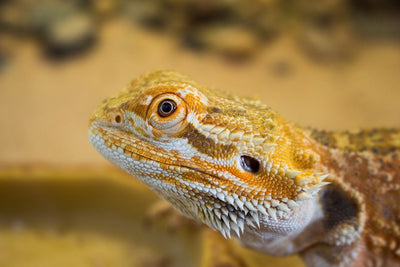
Selecting the Ideal Dry Cat Food.
Selecting the ideal dry food for your beloved feline companion requires careful consideration of various factors to promote their overall health and happiness. Understanding your cat's unique dietary requirements based on factors like age, activity level, and health conditions is crucial. By examining the ingredients, ensuring the presence of essential nutrients, and avoiding fillers or artificial additives, you can make a well-informed choice. Researching different brands and formulations empowers you to provide a balanced diet that supports your cat's well-being and longevity. This comprehensive guide delves into the essential aspects to contemplate when opting for dry cat food, equipping you with the knowledge needed to make the best decision for your furry friend.
Understanding Your Cat's Dietary Requirements
Cats are beloved pets that bring joy and companionship to our lives. To ensure that our feline friends live a long, healthy life, it is crucial to understand their dietary requirements. In this blog section, we will explore the essential nutrients that cats need for a healthy diet, highlight the benefits of a balanced diet for their overall well-being, and discuss the specific dietary needs of cats at different life stages.
Essential Nutrients for a Healthy Diet
A balanced diet is essential for cats to thrive. Cats require specific nutrients to support their growth, development, and overall health. These nutrients include:.
-
Protein: Cats are obligate carnivores, which means they require a diet high in animal-based protein. Protein is crucial for maintaining healthy muscles, tissues, and organs.
-
Taurine: Taurine is an amino acid that is essential for cats. It plays a vital role in heart function, vision, and reproductive health.
-
Omega-3 and Omega-6 Fatty Acids: These essential fatty acids help support a cat's skin and coat health, as well as overall immune function.
Benefits of a Balanced Diet
Providing cats with a balanced diet offers numerous benefits, including:.
-
Healthy Weight Maintenance: A balanced diet helps prevent obesity, which can lead to various health issues.
-
Strong Immune System: Proper nutrition supports a cat's immune system, helping them fight off illnesses and infections.
-
Improved Digestive Health: A diet rich in essential nutrients promotes healthy digestion and nutrient absorption.
Dietary Needs at Different Life Stages
Cats have different dietary needs at various life stages, including:.
-
Kittens: Kittens require a diet rich in protein and calories to support their rapid growth and development.
-
Adult Cats: Adult cats need a balanced diet to maintain their overall health and well-being.
-
Senior Cats: Senior cats may have specific dietary requirements, such as lower calorie intake and joint support.
Meeting the Specific Dietary Needs of Cats
In addition to the essential nutrients mentioned earlier, cats also require adequate hydration to support their kidney function and overall well-being. Water is essential for cats, and it is important to provide fresh, clean water at all times. Wet cat food can also contribute to a cat's overall water intake.
Furthermore, it is crucial to consider your cat's individual preferences and any specific health conditions when planning their diet. Some cats may have food sensitivities or allergies that require a specialized diet. Consulting with a veterinarian can help you tailor your cat's diet to meet their specific needs.
Conclusion
Understanding your cat's dietary requirements is essential for ensuring they lead a healthy and happy life. By providing a balanced diet rich in essential nutrients, meeting their hydration needs, and considering their individual requirements, you can support your cat's overall well-being at every life stage. Remember, a well-fed cat is a happy cat!.
Choosing the Best Dry Cat Food
Choosing the best dry cat food for your beloved pet is a decision that can significantly impact their health and well-being. To make an informed choice, it's crucial to consider several key factors that go beyond just the brand name or packaging. Let's explore in detail the essential aspects to keep in mind when selecting dry cat food.
Emphasizing High-Quality Ingredients
- The foundation of any nutritious cat food lies in the quality of its ingredients. Look for products that feature real meat as the primary ingredient, preferably without any by-products or artificial enhancers. High-quality protein sources like deboned chicken, salmon, or turkey not only provide essential nutrients but also ensure a delicious and satisfying meal for your cat.
Understanding Protein Content
- Protein is a crucial component of a cat's diet, supporting various bodily functions such as muscle growth, tissue repair, and energy production. Opt for dry cat food with a protein content of at least 30%, sourced from animal-based sources for better digestibility and absorption. Adequate protein intake is especially vital for cats' overall health and vitality.
Avoiding Harmful Fillers and Additives
- Fillers such as corn, wheat, and soy are commonly used in cat food but offer little nutritional value and can lead to digestive issues over time. Similarly, artificial additives like artificial colors, flavors, and preservatives should be avoided, as they may trigger allergies or other health problems in cats. Opt for products free from such additives to ensure your cat's well-being.
Decoding Labels and Certifications
- When browsing through dry cat food options, pay close attention to labels and certifications that indicate the food meets specific nutritional standards. Look for terms like 'AAFCO certified' or 'complete and balanced diet' to ensure that the food provides all the necessary nutrients for your cat's life stage. Additionally, reputable brands often source ingredients responsibly and employ quality manufacturing practices, reflecting their commitment to pet health.
By considering these key factors and taking the time to research and compare different dry cat food options, you can make a well-informed decision that prioritizes your cat's nutritional needs and overall wellness. Remember, investing in high-quality cat food today can lead to a happier and healthier life for your feline companion.
Avoiding Common Mistakes in Choosing Dry Cat Food
Ignoring the Ingredient List
When it comes to selecting the right dry cat food for your feline friend, one of the most common mistakes cat owners make is ignoring the ingredient list. It's crucial to go beyond the attractive packaging and marketing claims and delve into what actually goes into the food. Look out for products that contain fillers, by-products, and artificial additives. Instead, opt for options with high-quality protein sources like real meat as the main ingredients. Your cat's health and well-being greatly depend on the quality of the food they consume.
Tailoring the Diet to Your Cat's Specific Needs
Just as humans have varied dietary requirements, cats too have individual needs that must be met for optimal health. Factors such as age, activity level, weight, and any underlying health conditions play a vital role in determining the type of food that suits your cat best. Consider specialized formulas designed for kittens, seniors, or cats with special dietary needs. For instance, older cats may benefit from food that supports joint health, while kittens require higher levels of certain nutrients to support their growth and development.
Seeking Professional Advice from a Veterinarian
While general guidelines on cat nutrition are helpful, every cat is unique, and what works for one may not work for another. It's always wise to consult a veterinarian when making significant changes to your cat's diet. A vet can offer tailored advice based on your cat's current health status, dietary preferences, and any specific health concerns. They can recommend the most suitable diet plan and suggest adjustments as needed to ensure your cat receives all the essential nutrients in the right proportions.
Additional Tips for Choosing Dry Cat Food
- Look for foods that are AAFCO (Association of American Feed Control Officials) approved to ensure they meet the minimum nutritional requirements for cats.
- Consider your cat's preferences and any food allergies or sensitivities they may have when selecting a dry food formula.
- Monitor your cat's weight and overall health regularly to assess if the chosen diet is meeting their needs effectively.
By being mindful of these common mistakes and taking proactive steps to provide your cat with a well-balanced diet tailored to their specific requirements, you can contribute to their long-term health and happiness.
Top Dry Cat Food Brands for Your Feline Friend
Finding the right food for your feline friend can be a daunting task. With a myriad of options available, choosing the best dry cat food brand is crucial for your cat's health and overall well-being. Let's explore some of the top dry cat food brands that stand out in the market.
-
Wellness CORE Natural Grain Free Dry Cat Food.
-
Features and Benefits of Wellness CORE: Wellness CORE is a standout dry cat food brand known for its commitment to using high-quality ingredients. With real meat as the primary ingredient, supplemented by fruits and vegetables, this grain-free formula provides a well-rounded, nutritious diet for your cat. Additionally, Wellness CORE is rich in essential nutrients like Omega fatty acids and antioxidants, supporting your cat's immune system and promoting a healthy coat and skin.
-
Royal Canin Indoor Adult Dry Cat Food.
-
Advantages of Choosing Royal Canin: Royal Canin has earned its reputation as a premium dry cat food brand by offering tailored nutrition for indoor cats. Specifically designed to meet the unique needs of indoor felines, this formula supports weight management, hairball control, and digestive health. Royal Canin's blend of fibers helps reduce hairballs, while the controlled calorie content assists indoor cats in maintaining a healthy weight and lean muscle mass.
-
Blue Buffalo Wilderness Indoor Hairball & Weight Control Dry Cat Food.
-
Promoting Feline Health with Blue Buffalo: Blue Buffalo's commitment to feline health shines through in its Wilderness Indoor Hairball & Weight Control formula. By prioritizing real chicken as the main ingredient, this dry cat food provides a protein-rich diet that supports muscle development and weight management. The inclusion of natural fiber sources aids in reducing hairballs, promoting digestive health, and ensuring your cat maintains a healthy weight.
When selecting dry cat food for your furry companion, consider factors like ingredient quality, nutritional value, and your cat's specific dietary requirements. By opting for reputable brands like Wellness CORE, Royal Canin, and Blue Buffalo, you can provide your feline friend with a balanced and wholesome diet that enhances their overall well-being and longevity.
Transitioning to a New Dry Cat Food
Transitioning to a new dry cat food can be a significant change in your cat's routine, but with the right approach, it can lead to a healthier and happier feline companion. Your cat's diet plays a crucial role in their overall well-being, so it's essential to pay attention to their transition process. Here are some additional tips to help you smoothly shift your cat to a new dry food and signs to watch for that indicate your cat is adjusting well.
Choosing the Right Food
Before starting the transition, research and select a high-quality dry cat food that meets your cat's nutritional needs. Look for options that are rich in protein, low in fillers, and free from artificial additives.
Slow and Steady Transition
While a gradual transition is recommended, some cats may need more time to adjust. Don't rush the process, and be patient if your cat needs a more extended transition period.
Palatability
Cats can be picky eaters, so it's essential to ensure that the new dry food is palatable to your cat. You can try mixing in a small amount of wet food or broth to entice your cat to try the new food.
Mealtime Routine
Establish a consistent mealtime routine to help your cat adapt to the new feeding schedule. Cats thrive on routine, so maintaining a regular feeding schedule can aid in the transition process.
Monitor Weight and Body Condition
Keep an eye on your cat's weight and body condition throughout the transition. Sudden weight loss or gain could indicate issues with the new diet and may require adjustments.
Transitioning Older Cats
Older cats may have more sensitive digestive systems, so pay extra attention to their transition process. Consider consulting your vet for specialized advice on transitioning senior cats to a new diet.
Long-Term Health Benefits
Remember that transitioning to a new dry cat food is an investment in your cat's long-term health. A balanced diet can contribute to improved energy levels, a shiny coat, and overall well-being.
By following these additional tips and observing your cat's response closely, you can ensure a successful transition to a new dry cat food that benefits your feline companion's health and happiness.
Conclusion
Selecting the right dry cat food for your feline friend is crucial for their overall health and well-being. By considering factors such as your cat's age, dietary needs, and preferences, you can make an informed decision that ensures they receive the necessary nutrients for a long and happy life. Remember to consult with your veterinarian for personalized recommendations and stay informed about any updates in feline nutrition to provide the best care for your beloved pet.






